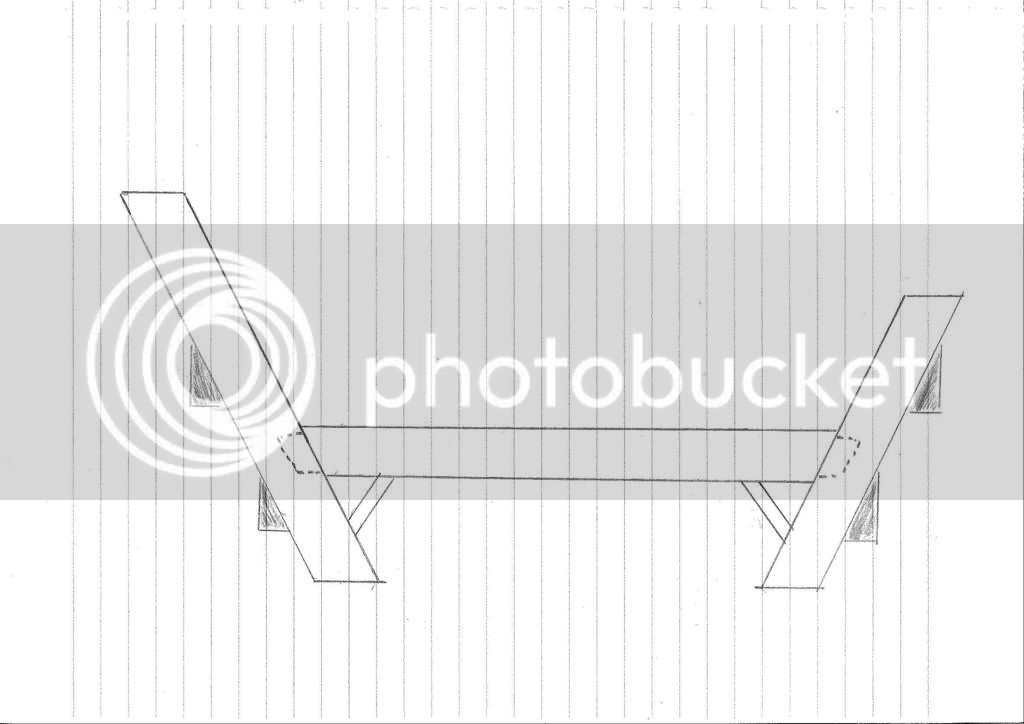disco_monkey79
Established Member
- Joined
- 5 Oct 2009
- Messages
- 681
- Reaction score
- 48
Hi
I'm making a chaise, and below is a highly technical side-on profile view, using my own patented Skrew'dUp software.
I need to clamp it together whilst I glue and screw the mortices, but the incline of the legs makes it akward. Anyone had any experience of doing this?

2 ideas occur to me - cutting wedges (represented by the shaded triangles) and then using sash clamps (not that I own any that long), or using ratchet straps. I'm worried the latter may be a little imprecise for fine adjustment.

There are 2 of these sections, that sit side by side, and I want to clamp and glue simultaneously, to ensure they mirror each other.
Thoughts/advice greatly appreciated,
Thanks
I'm making a chaise, and below is a highly technical side-on profile view, using my own patented Skrew'dUp software.
I need to clamp it together whilst I glue and screw the mortices, but the incline of the legs makes it akward. Anyone had any experience of doing this?

2 ideas occur to me - cutting wedges (represented by the shaded triangles) and then using sash clamps (not that I own any that long), or using ratchet straps. I'm worried the latter may be a little imprecise for fine adjustment.

There are 2 of these sections, that sit side by side, and I want to clamp and glue simultaneously, to ensure they mirror each other.
Thoughts/advice greatly appreciated,
Thanks

































